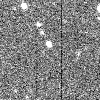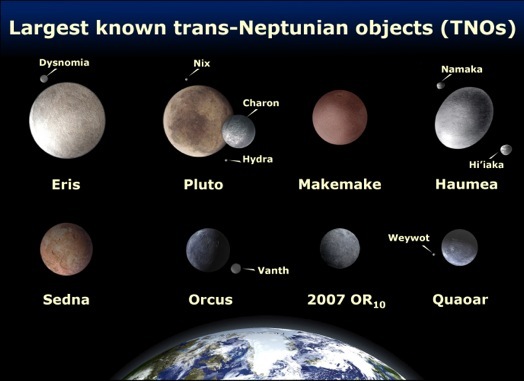The surveys previously looking for distant bodies in the Kuiper belt (Kuiper belt objects or KBOs), including Clyde Tombaugh’s survey for Pluto, have all be done from telescopes in the Northern Hemisphere. We have covered the Northern skies thoroughly and found the largest bodies including Eris, Pluto, Haumea, Quaoar, Makemake, Orcus, 2007 OR10 and Sedna. Each one of these large icy bodies are bright enough to study their physical properties with medium and large telescopes. Although telescopes from the Northern hemisphere can reach part of the southern skies, there is large portion of the southern skies that have not been looked at. There may be 2 or more dwarf planets awaiting discovery. The aim of this survey is to search for these bodies and study the physical and dynamical properties of the largest ones we discover. Our search for large KBOs will continue for the next 3 years and is supported by funding from the NASA Planetary Astronomy program, the National Science Foundation, and Yale University.
Why the Southern Hemisphere?
About the Survey
How do we look for Kuiper belt objects (KBOs)?

Want to know more about dwarf planets in the outer solar system?
Check out Mike Brown’s dwarf planet website, you can find it here.
To find moving solar system bodies, we take 3 images of the same region of the night sky over a 3 hour period.
Target fields are observed near opposition where the apparent movement of KBOs is dominated by the Earth's parallax. Exploiting this opposition effect, slow-moving solar system objects are identified by their retrograde motion.
In a single image a KBO will appear to be a like a stationary star or galaxy in each one of our images, but when you look at the three images together, the KBOs will be the objects that appear to move from one image to the next. KBOs are extremely distant (30-100 AU) and so move very slowly (~1-3 arcseconds/hr) only a few pixels (~1-3 arcseconds/hr). Vast areas of the sky have to be searched before something this unusual is found.


Dwarf planet Eris moving in three images taken by the QUEST camera
in La Silla, Chile. A passing asteroid appears above Eris in the first image.
What will we do with the large KBOs the survey will find?
The largest of the bodies discovered in the Yale survey will become objects of further intensive study in order to explore the interior, surface, and atmosphere of these bodies. For the newly discovered dwarf planets we may find in the survey we hope to perform a detailed study to characterize their individual physical, chemical, and dynamical properties including:
-
 Spectroscopic and photometric observations to examine the surface volatile inventory and the processes shaping the surfaces and atmospheres of these large bodies
Spectroscopic and photometric observations to examine the surface volatile inventory and the processes shaping the surfaces and atmospheres of these large bodies
-
 Search for satellites to probe the internal structure, composition, and mass of these large KBOs and investigate the collisional history of the Kuiper belt
Search for satellites to probe the internal structure, composition, and mass of these large KBOs and investigate the collisional history of the Kuiper belt
-
 Examine the orbital properties of the all new discoveries including looking for unusual orbits
Examine the orbital properties of the all new discoveries including looking for unusual orbits